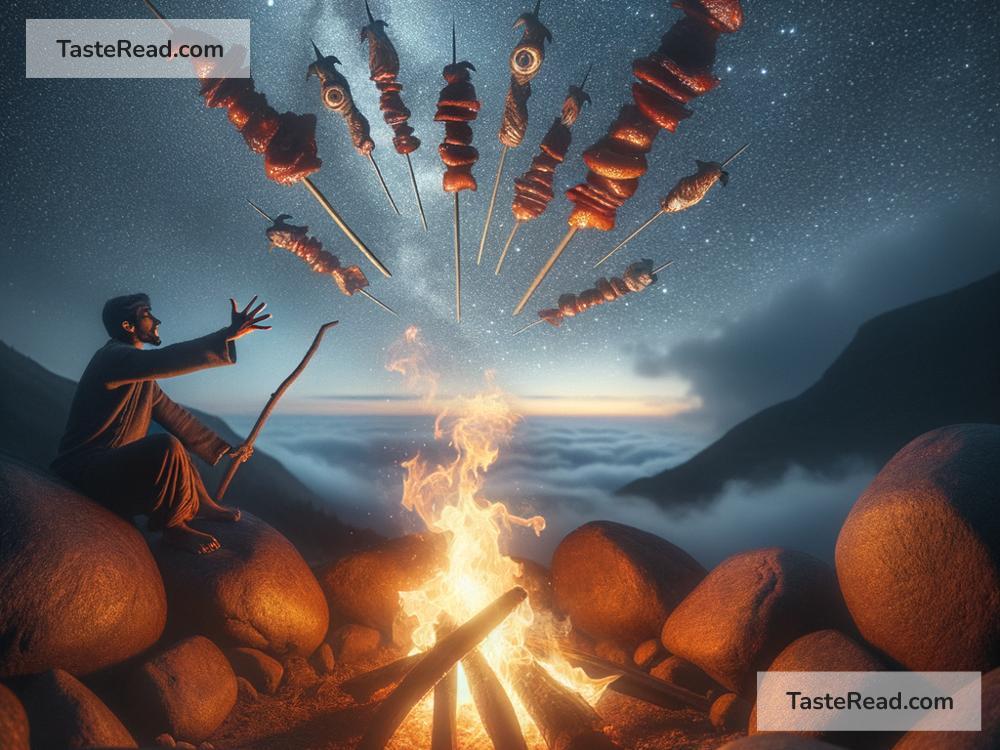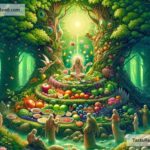The Mythical Story of Fire-Roasted Meat: A Tale to Savor
For as long as humans have lived together, stories and traditions have shaped their cultures. One such tale is the mythical origin of fire-roasted meat. This mouthwatering practice, which fills the air with the aroma of sizzling goodness, is a common method used to cook food today. But where did it all begin? Long before recipes and grills, humans gathered around fires, sharing food and stories. And through the ages, one whimsical myth about fire-roasted meat has lived on—a story of discovery, transformation, and community.
Let’s take a journey back in time, blending folklore and simple storytelling to uncover the origins of this beloved culinary tradition.
The Age of Survival: Life Before Roasting Meat
In the distant past, when humans relied solely on what the earth provided, food was eaten raw or simple. Early humans hunted animals, gathered fruits, and fished in rivers and oceans, consuming natural foods just as they found them. The idea of cooking or preparing food had not yet entered human minds; survival was the only concern.
Meat, in particular, was tough to eat raw. Biting into uncooked flesh took effort, and eating it was not always pleasant. But food was food, and humans needed the energy to keep going. So, they ate it anyway.
According to myth, one day, a life-changing event occurred—the moment fire and meat first came together.
The Accidental Feast: A Mythical Discovery
The story begins with the first fire known to humankind. Some tellers of the tale say fire was a gift from the gods. They created it to warm the earth and protect humans from the cold, darkness, and wild animals. Others believe fire was accidental, sparked when lightning struck a dry tree or grass, igniting flames that no human had ever seen before.
In this mythical tale, a group of wanderers noticed an unusual fire burning on the horizon. Filled with curiosity but also fear, they approached it cautiously. Somewhere nearby lay the remains of an animal struck by lightning. Its body had been burned and blackened in the flames.
At first, the humans thought the sight was tragic and sad. That animal might have been food for them earlier, but now, it seemed ruined. Still, one brave member of the group stepped forward. Hunger gnawed at their belly, and their curiosity couldn’t resist trying a piece of the cooked meat.
To their great surprise, the flavor exploded across their tongue! The meat was softer, juicier, and tastier than anything they had ever eaten before. The heat of the fire had transformed the tough raw flesh into a tender feast.
Ecstatic, the brave explorer cried out to the others, encouraging them to try it. Slowly, the group gathered around the fire, sampling the roasted meat with caution. One after another, their faces lit up with delight. They realized that fire wasn’t just a force of destruction—it was a tool for better living.
The Trial and Error: Mastering Fire
After their discovery, humans began experimenting with fire and food. According to legend, early pioneers of cooked meat faced many challenges. Sometimes, their fires got too hot and burned the meat until it turned to ash. Other times, their fires died out too quickly, leaving the food cold and undercooked.
Still, humans persisted. Through trial and error, they learned not only to roast meat but also to control fire itself. They learned about the importance of timing, patience, and focus. The story goes that the gods watched humanity’s progress with pride, glad their gift of fire had helped inspire creation rather than fear.
Over time, meat was cooked not just for survival, but for enjoyment. These early humans started sharing fire-roasted food with others, creating rituals, celebrations, and feasts. Cooking evolved from being a necessity into an art form.
The Role of Community: Fire and Food Bring People Together
At the heart of this mythical story lies an important truth: fire-roasted meat brought people closer. Sitting around a fire allowed humans to protect themselves from nighttime dangers while eating together and enjoying each other’s company.
Cooking meat became more than just a task—it became a social act. Families gathered around fires, hunters shared the catch of the day, and villages united for feasts to celebrate accomplishments or mark important milestones. The process of roasting meat fostered connection and created a spirit of community.
Even today, the practice of grilling or roasting meat often brings people together: backyard cookouts, bonfires, camping trips, and barbecue gatherings. The warmth of the fire and the deliciousness of smoky, cooked meat remain symbols of human bonding.
Beyond the Myth: Fire-Roasted Meat Today
Though the mythical origins of fire-roasted meat are purely imaginative, elements of truth are woven into the tale. Fire did, in fact, play a pivotal role in early human development. Cooking made food safer, easier to digest, and more enjoyable to eat, which helped humans survive and evolve.
Today, fire-roasted meat continues to be a favorite around the world. From kebabs to steak, from smoky ribs to charred chicken, the art of grilling remains a cherished tradition.
Conclusion: A Timeless Tale
The mythical story of fire-roasted meat reminds us why this cooking tradition is so special—not just because it tastes amazing, but because it represents humanity’s creativity, resourcefulness, and need for connection. Whether we’re sitting around a modern barbecue or imagining ancient humans testing their first fire, this tradition carries a piece of history, legend, and love.
The next time you bite into a piece of fire-roasted meat, take a moment to savor the flavor and consider the journey humanity took to get here. It’s not just food—it’s a story. A story worth sharing.


